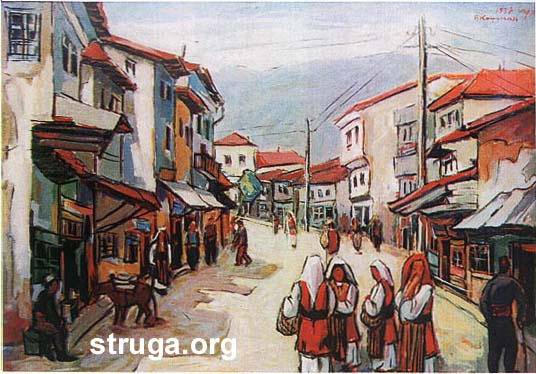
|
|

The traditional folk creative work in Macedonia, which is remarkably rich and diverse including here the impressive folk poetry, folk music and dance, has been a valuable cultural heritage created by the Macedonians throughout the centuries. This folk creative work is distinguished by its own elements and characteristics in the frames of the whole material and spiritual culture of the Macedonians which arouse from the specific natural and geographical conditions on the Southern part of the Balkans in highly uncertain and specific historical conditions. The territory on which Macedonia is located have always been an important and inevitable intersection in the great migrations of the peoples that contributed to a mixing and a synthesis of diverse cultural influences in every domain of the lives of the peoples. The coming of the Slavs on the Balkans meant deep ethnosociological changes which basically changed the ethnic milieu of this part of the Balkans although they encountered a higher degree of culture - the Byzantium culture. The Slavs kept the basic components of their way of living, but in the course of time one can notice the influence of the Byzantium civilization which can be easily noticed on the archaeological remains and the fresco paintings. The transformation on the folk dresses, the embroidery, and the jewellry is particularly impressive. Nevertheless, the tradition continues in the patterns of the folk dresses, the softness and the symbolics of the colours and their composition which represents the basic mark of the further symbiosis and development of the folk dresses. In the course of time the folk dresses will be submitted to changes due to different influences depending on the time and the living conditions. Although containing some elements or just traces of elements of foreign influences the Macedonian folk creative work, as a group or anonymous creation of the people connected with every day life, presents its continuity, vitality, and definition in the artistry. In the rich opus of the traditional folk creative work of the Macedonians the folk dresses and jewellry that goes with them have been transmitted from generation in the course of time as a specific branch of the folk creative work which represented real works of art through the harmonious of the ornamental composition into the warm and peaceful tones of natural colors. Risto Taneski |